Fruits are an essential part of every diet, but buying produce at the grocery store or local market can get expensive. Of course, not all of us are lucky enough to live on a farm and grown our own to cut down on our grocery bill. Growing fruit trees in container is not only cheap, but it gives you immediate access to the foods you love!
There are several fruits that you can grow at home, even if you have limited space. Growing fruit trees at home also gives you the satisfaction of being able to feed yourself and your family due to your hard work.
It might sound intimidating but growing fruit trees in pots is an attainable goal for everyone, regardless of your level of gardening experience. Keep reading this article to learn which fruit you can easily grow in a container or pot in your own home.
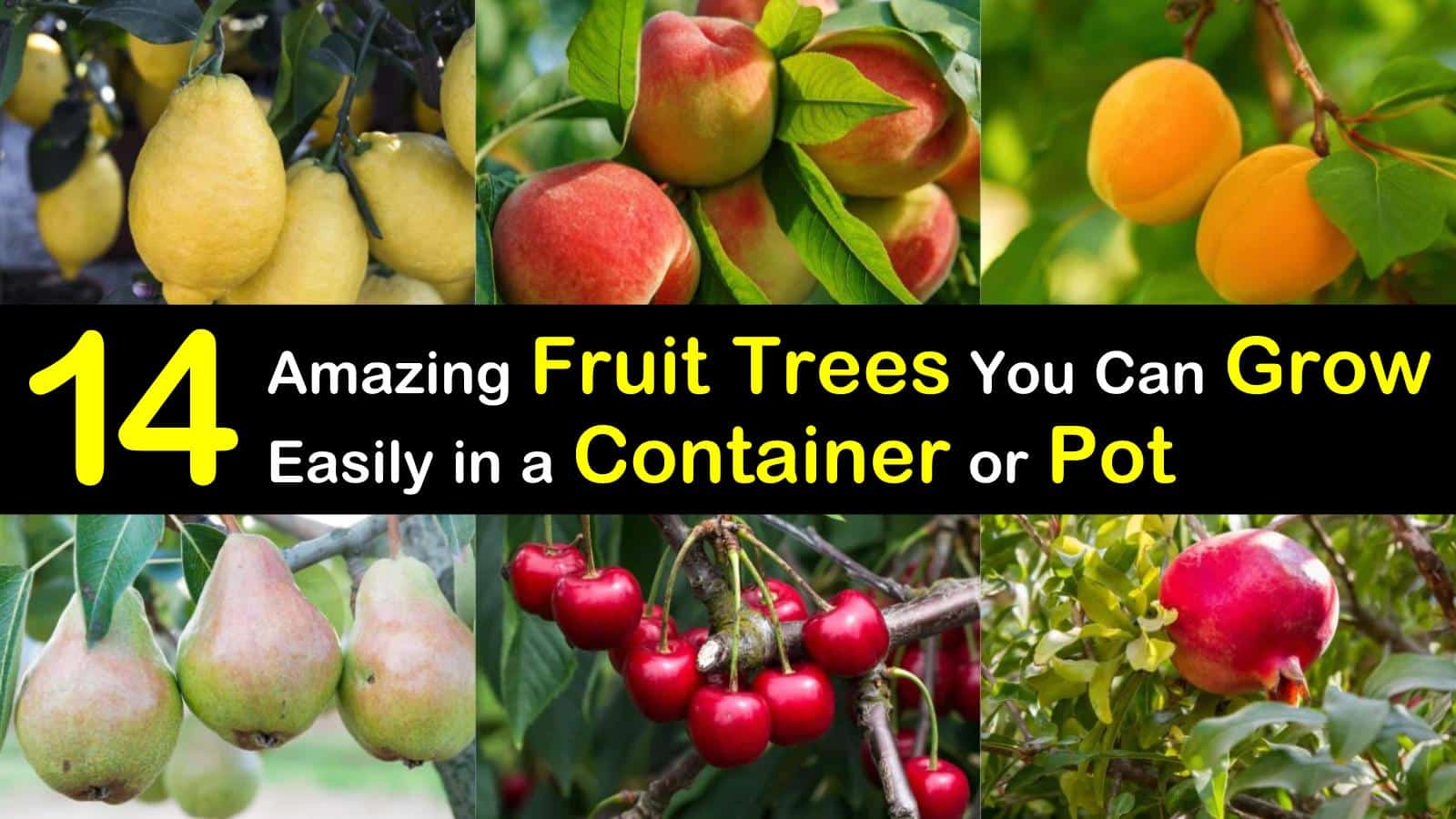
- Why Choose Fruit Trees in Container?
- Fruit Trees You Should Grow in a Pot at Home
- Peach Trees – Perfect Fruit for Containers
- Fig Trees
- Apple Trees
- Cherry Trees – Delicious Container Fruit
- Tangerine Trees
- Lemon Trees
- Lime Trees – Great for Growing in Pots
- Pear Trees
- Plum Trees
- Apricot Trees – Compact Fruit Tree for Pots
- Orange Trees
- Olive Trees
- Pomegranate Trees – Container Fruit Tree that Looks Great
- Mandarin Trees
Why Choose Fruit Trees in Container?
It’s easy and convenient to grow roses in pots, your favorite flowers, or fruit trees. While we’d all love to have fresh fruit on hand, not everyone has room. That’s why fruit trees in containers are perfect!
When growing avocado in pots or another fruit, you can keep them outside or indoors, even if you live in a small space like a tiny apartment. Whether you live in a city or the suburbs, adding a fruit tree adds an element of freshness to any living space.
Where to Buy Container Fruit Trees
To grow a fruit tree in a container or a pot, look for dwarf varieties. You may be able to find them at your local garden center or hardware store, but you will likely have to look elsewhere. If you don’t have luck there, you may have to look for container fruit trees at a nursery or turn to online shopping.
If you cannot find any pre-potted, you can always grow your own from seeds though it may take years before they bear fruit. Make sure you purchase the dwarf version of the fruit you want and not the full-sized variety.
It’s easy to plant avocado seeds but patience is required if you want avocado fruits.
Tips for Growing Fruit Trees in Pots
When growing fruit trees in pots, it is vital to choose the right container. The same applies when planting watermelon in containers or any other type of plant. You can go for the more expensive option of buying terracotta pots from the garden center, or you can use some DIY options. Although they aren’t very attractive, large containers such as galvanized dustbins or rubber tubs will work.
Get a container that is at least one foot deep and one foot in diameter. If it doesn’t have them already, drill drainage holes in the bottom of your dustbin or tub so that your fruit tree doesn’t get waterlogged.
Place potting soil in your container and set it in an area that gets a lot of sunshine. If you want your dwarf fruit trees to last, a soil that releases nutrients slowly is the best choice.

Keep your potted trees well watered, and an extra splash of fertilizer or high-potash feed every two weeks will keep them healthy. It’s also easy to fertilize citrus trees with coffee grounds, whether you sprinkle them around the plants or make coffee fertilizer tea.
To keep your container fruit trees growing, make sure they don’t get rootbound. When roots get out of control, they can take over the potting mix. To fix this, re-pot your fruit trees to a larger container, or take them out of the pot and prune the roots.
Putting down some mulch on the surface of the soil is also helpful, as one problem you might encounter with your potted fruit trees is pests. If this happens, check out our tips on getting rid of spider mite issues and how to spot gnat eggs in soil.
Fruit Trees You Should Grow in a Pot at Home
Choose one or more of these easy fruit trees to grow on your balcony or patio or put them indoors in front of a sunny window. Enjoy the beauty while they grow and the harvest when the fruit is ripe.
Peach Trees – Perfect Fruit for Containers
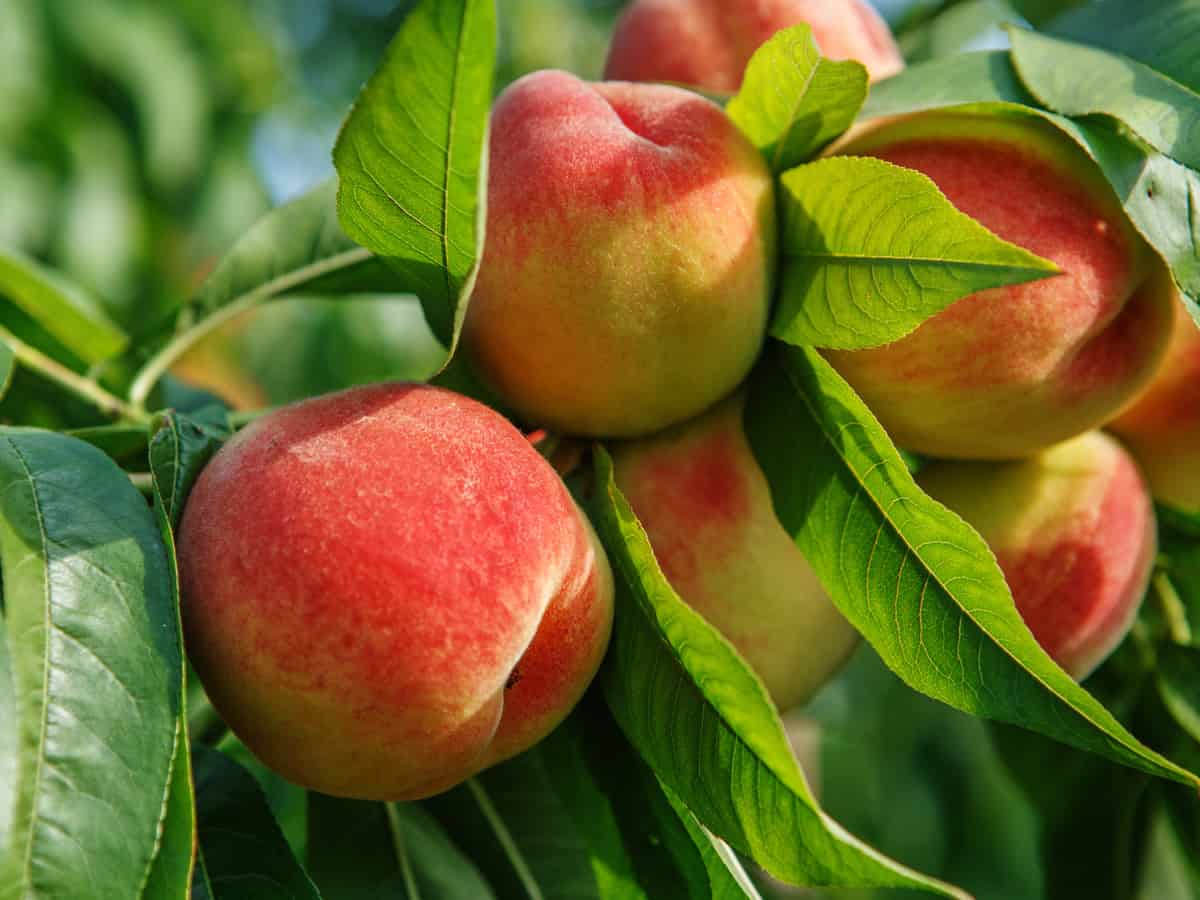
This delicious, juicy fruit is a great one to try to grow at home. When growing trees in containers, make sure you start with a peach tree with dwarfing rootstock. One of the best varieties of dwarf peach trees is the Bonanza.
Peach trees are dormant over winter and blossom in early spring. Though they are hardy throughout winter, they can be damaged by frost when they first start to flower. If you have a cold spring, bring the tree planter pot inside.
Fig Trees
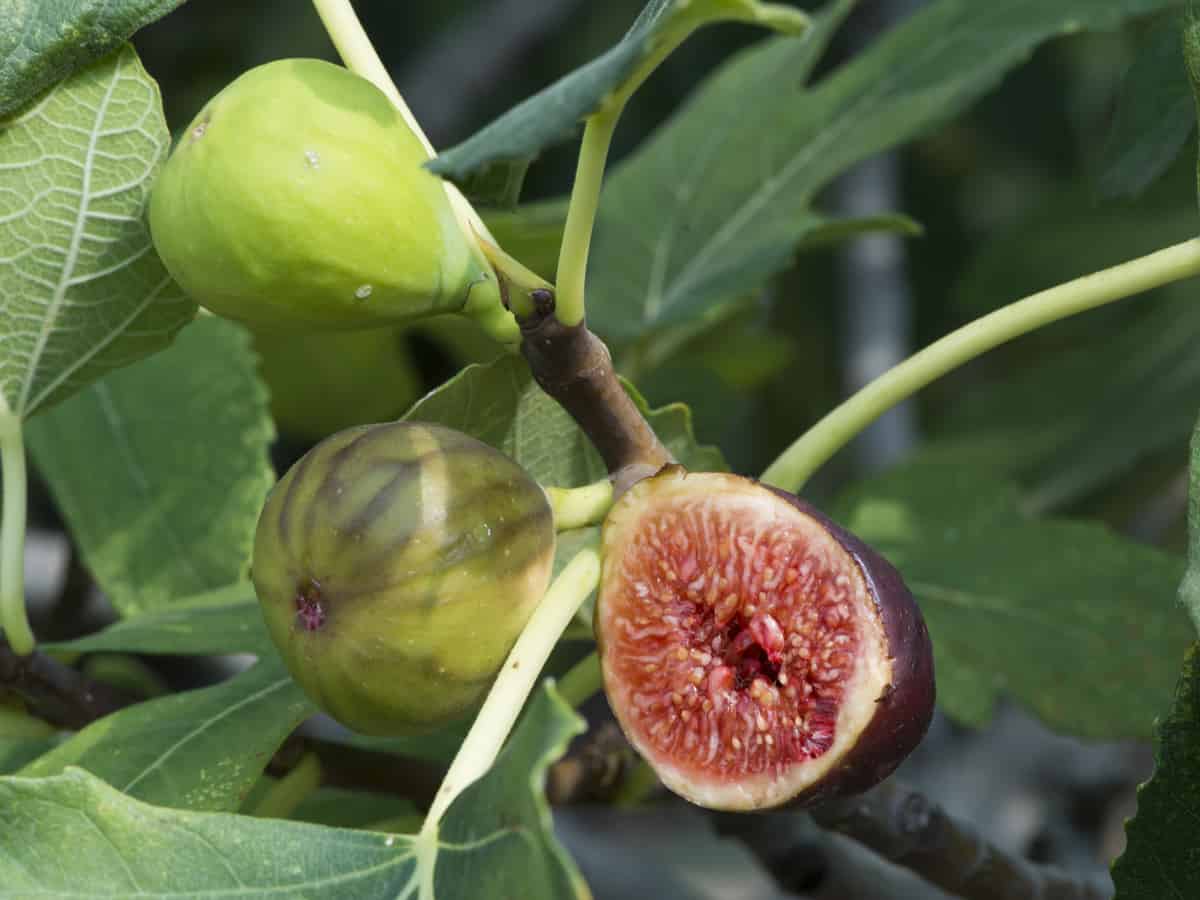
Figs are one of our favorite trees to grow at home because the plants look beautiful, and the leaves give off a pleasant scent. The ripe fruit of the tree is delicious, and the roots prefer to be contained, making them perfect for potting.
You can train your fig trees to grow in a lovely fan shape, tying the branches to a stick or nearby structure. Some great fig trees to grow on your own are Brown Turkey, Panachee, and Black Mission.
Apple Trees
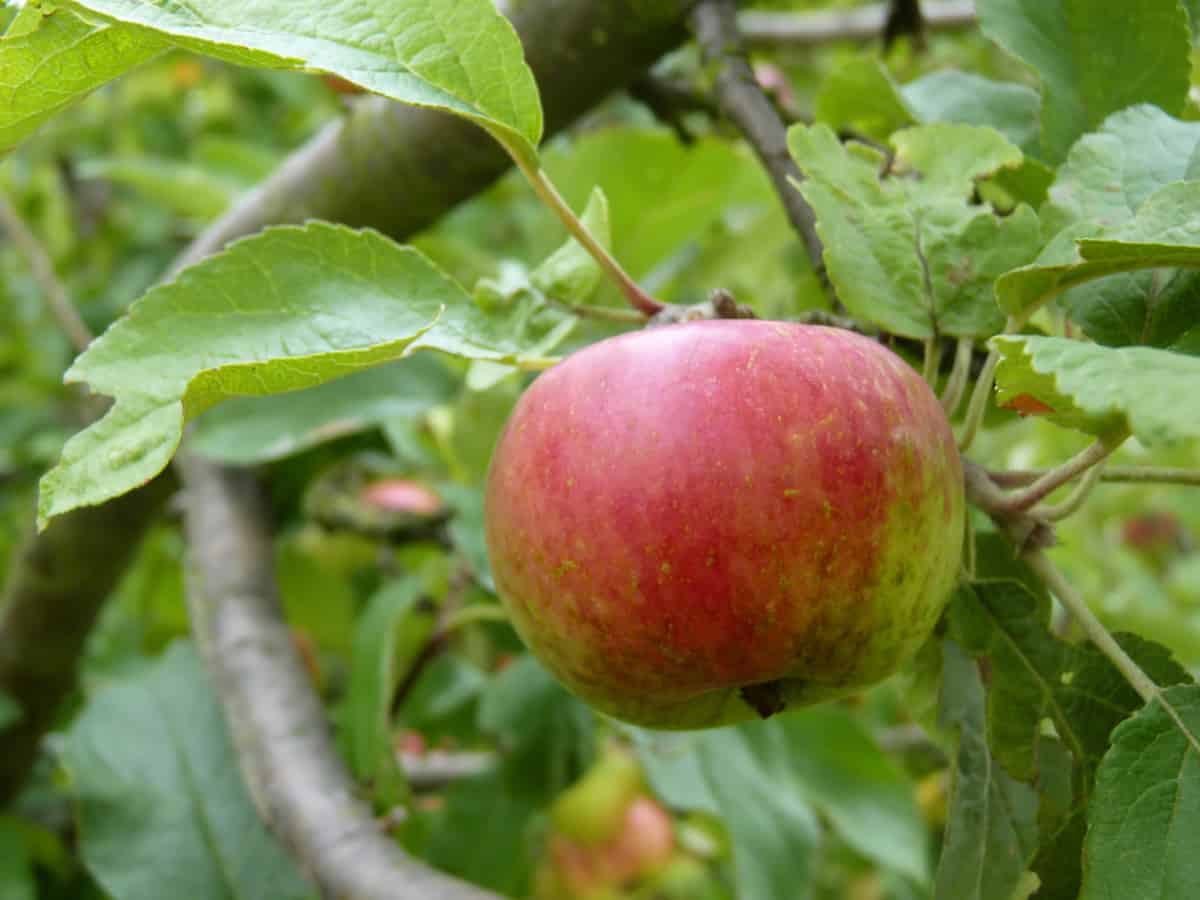
You’ve probably never thought that you could grow apples indoors, but with the right dwarf rootstock, it’s possible. When grown from the rootstock, apples grow as a bush instead of a tree. They are perfect for balconies and terraces.
When growing in a small space, it is best to choose a variety of apple that is self-fertile instead of one that requires cross-pollination. This way, you don’t need to grow more than a single plant to get them to grow. Dwarf apple trees prefer neutral to slightly acidic soil and cannot stand excess water.
Cherry Trees – Delicious Container Fruit
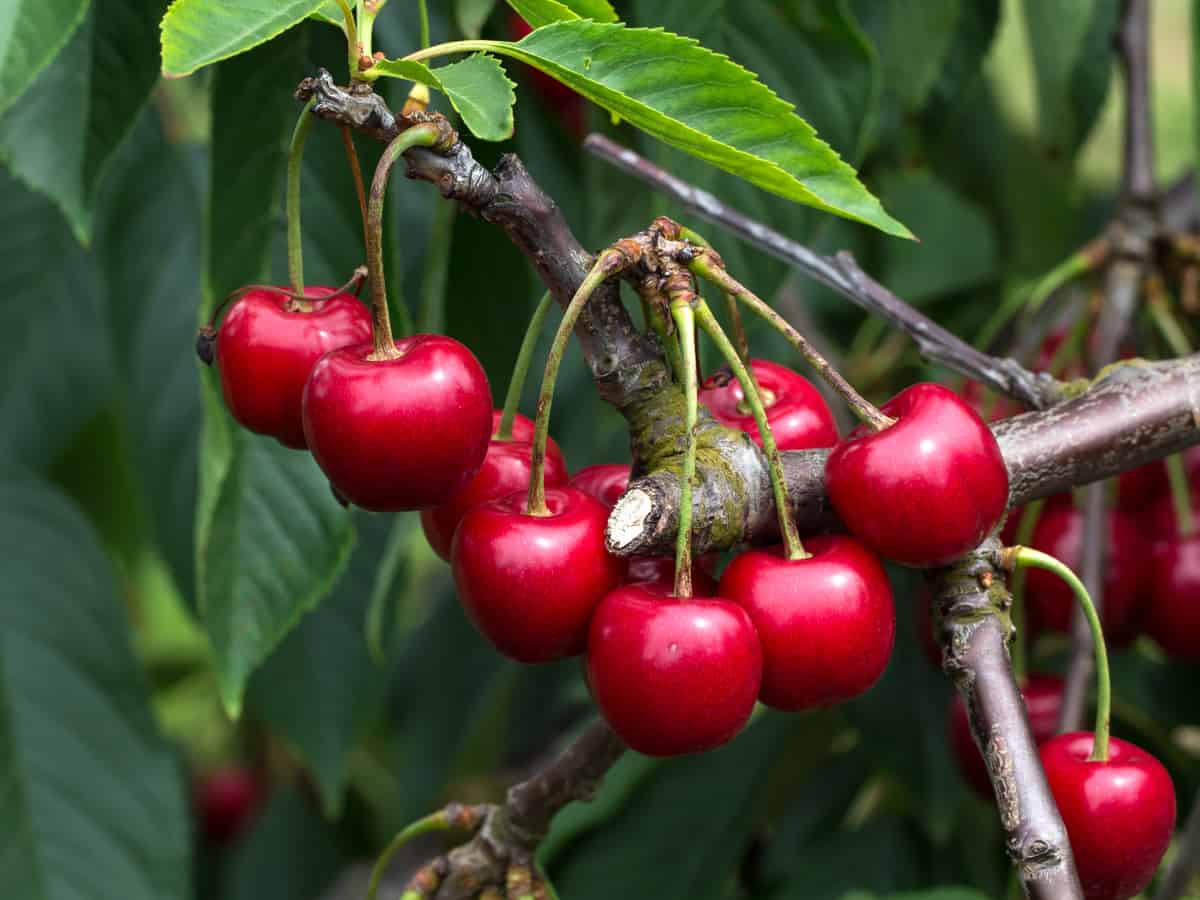
Growing a cherry tree in a container is another good option as they are self-fertile. Like apples, cherries grow as a bush when grown on dwarfing rootstock. One issue you might encounter if you leave your trees outside is birds.
They will go after this tasty fruit as it ripens, so putting up netting might be necessary. If you’re looking to grow a cherry tree in pot, then Lapins and Stella are suitable varieties.
If you don’t have full sun, a Morello or Acid Cherry will do well in a shady area. The latter types are perfect for cooking.
Tangerine Trees
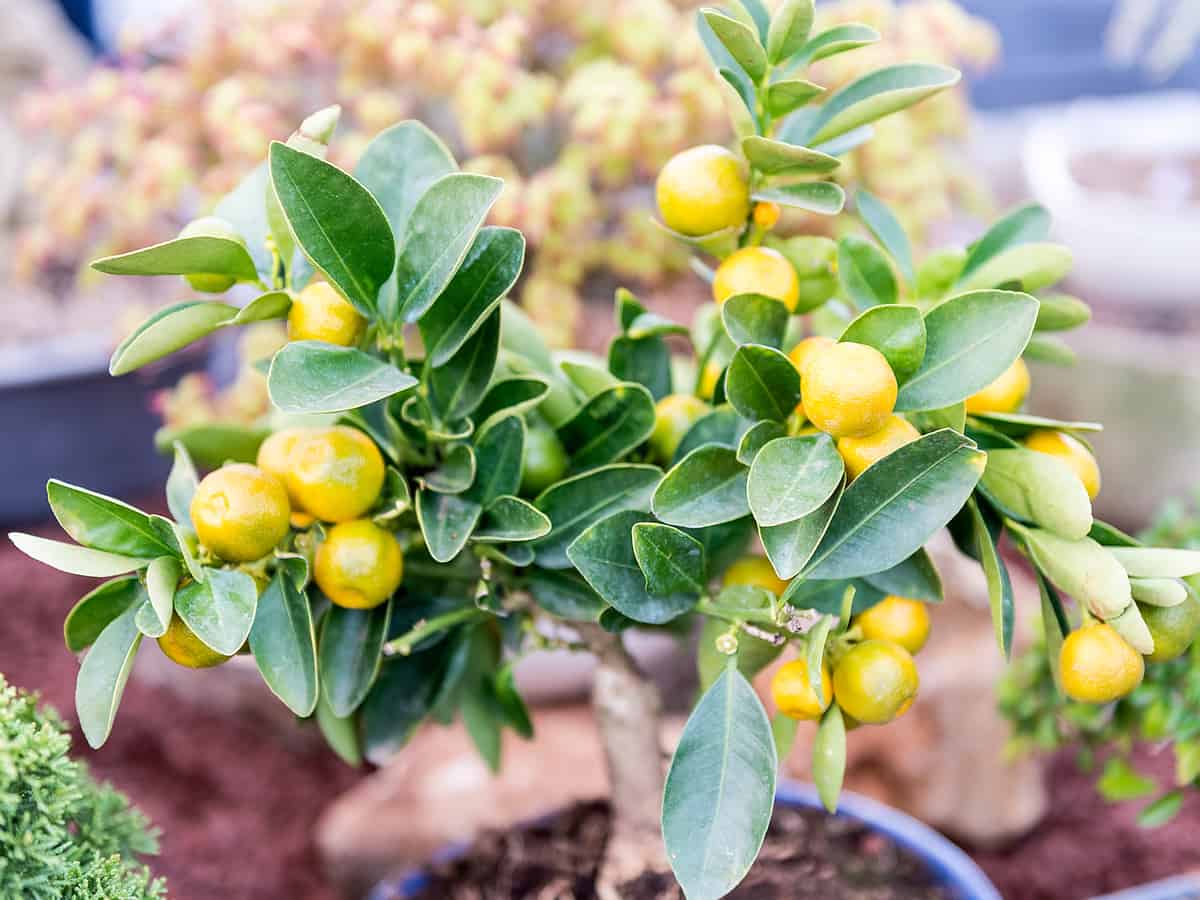
To successfully grow tangerine trees in a container or pot, you need good drainage. They need full sun, which means at least six hours of sunlight a day, but can grow indoors. However, you will get the best results if you keep it outdoors during the warmer seasons.
A tree grown from dwarf rootstock will grow no taller than 4 or 5 feet, and a 10 to 15-gallon container size will suffice. A dwarf tangerine tree thrives with light but frequent water instead of soaking the roots.
Lemon Trees
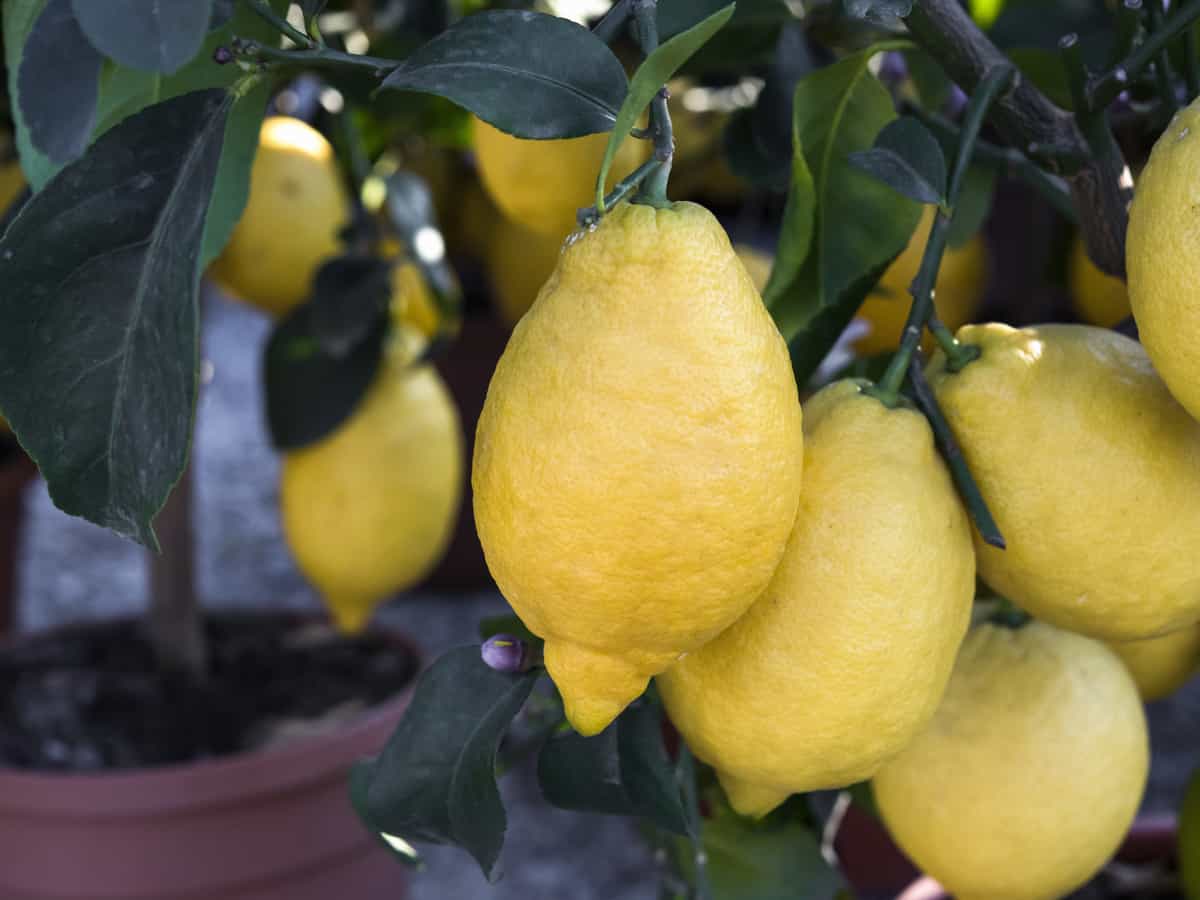
There are many varieties of dwarf lemon trees to choose from when you get started. The Improved Meyer, Lisbon Lemon, and Dwarf Eureka are all great options for container gardening. However, most lemon trees don’t grow too big, so almost any variety can work.
Growing citrus trees is relatively simple. Citrus trees love the sun, so make sure to put your lemon tree somewhere it can get 7 to 8 hours of sunlight. This fruit tree also likes frequent watering, but too much can cause problems.
Check the soil for moisture before it dries out. A bonus for growing lemons is that they are a great answer to the question: what keeps mosquitoes away?
Lime Trees – Great for Growing in Pots
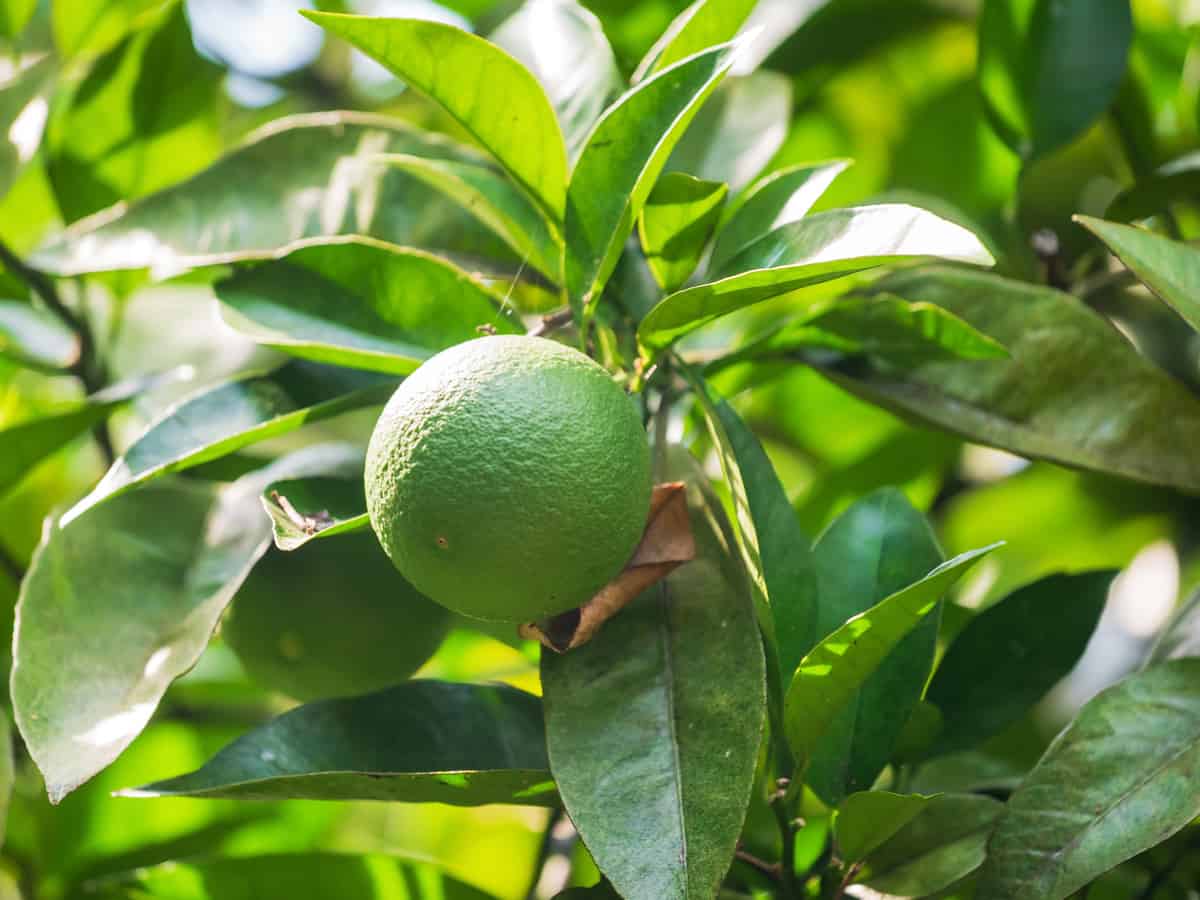
Lime trees are one of those fruit trees that benefit from being grown in a container because of mobility. Like most citrus trees, colder temperatures are a death sentence. Having a dwarf tree in a pot means you can quickly move your growing limes inside when it drops below 25°F.
The best lime trees for container gardening are the Tahitian or Persian, the Kaffir, and the Mexican lime. Keep in mind that if you can keep your tree thriving for a few years, you will likely have to re-pot or prune the roots.
Pear Trees
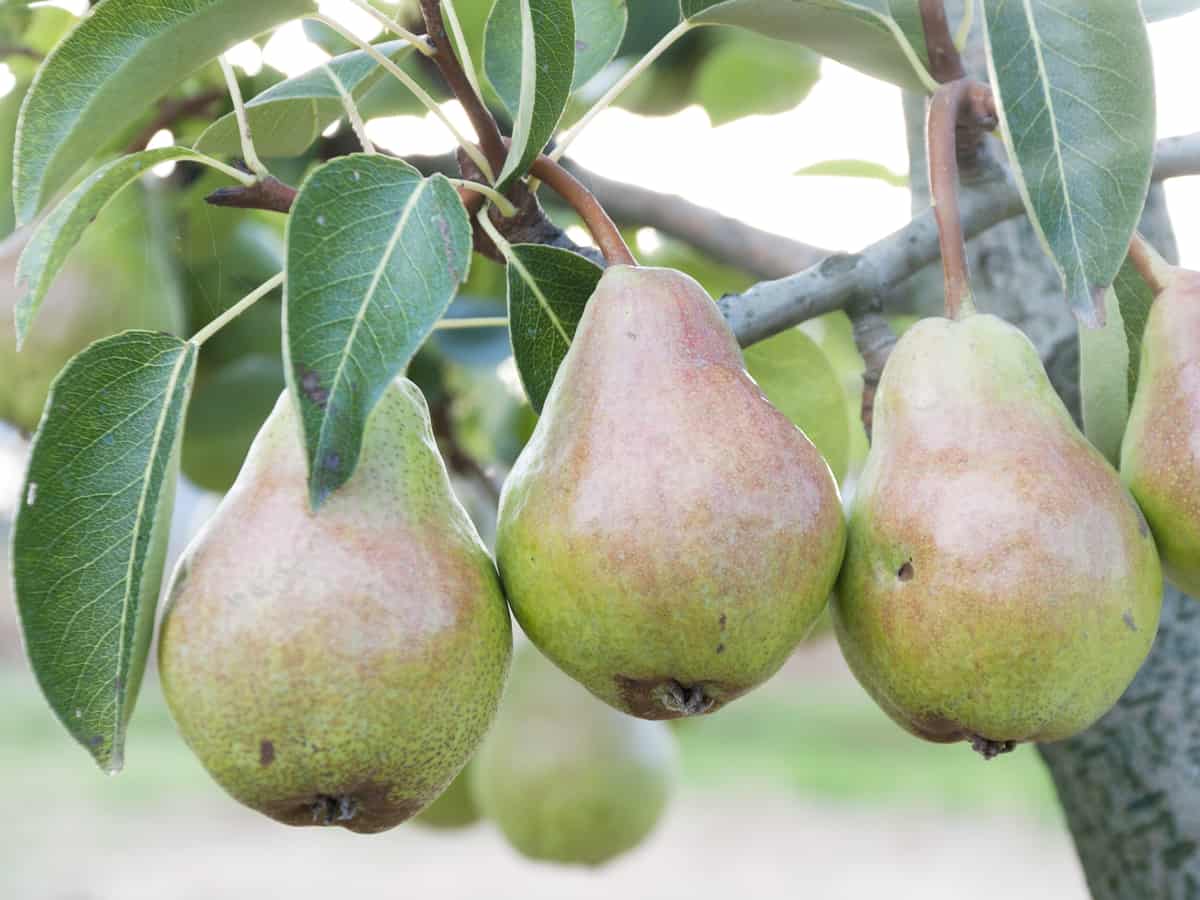
Pears are one of the best fruit trees for containers because you have more control over the conditions. Pears tend to flower early, so late frosts can be very dangerous. If you can, move your tree indoors or cover the branches with fleece if you expect frost during the flowering season.
The best varieties of dwarf pear are the Collette Everbearing, Conference, Durondeau, and Stark Honeysweet. Like all the trees on this list, pears require full sun and frequent, though not excessive, watering.
Plum Trees
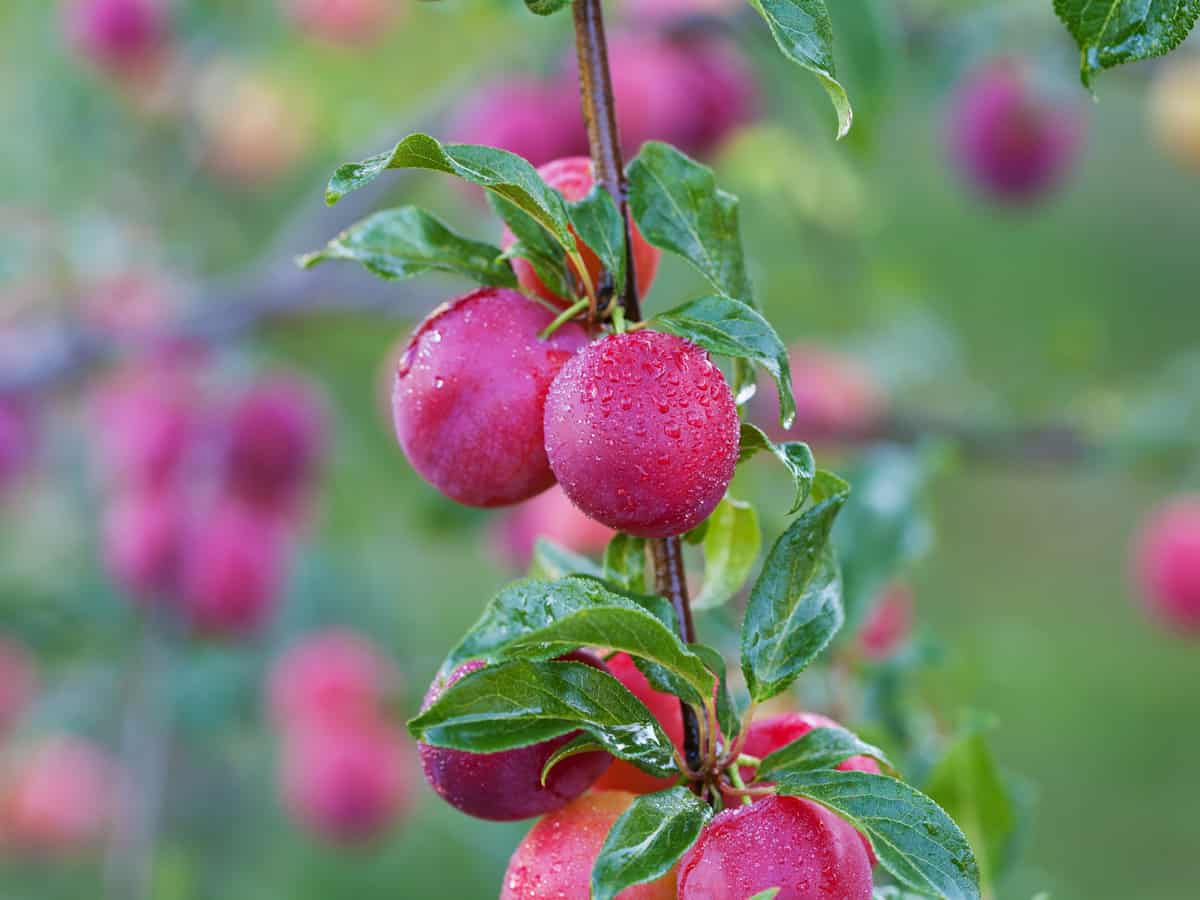
Another of the best dwarf fruit trees for containers, plum trees produce heavy crops with little effort. Most are self-fertile and don’t require much pruning, except in summer. Greengages are an excellent variety to grow.
The one thing you must be careful of is thinning developing fruit. A common problem with plum trees is that they produce too many plums one year, and then next to nothing the following year. Thin out your crop, so the fruits are about two inches apart.
Apricot Trees – Compact Fruit Tree for Pots
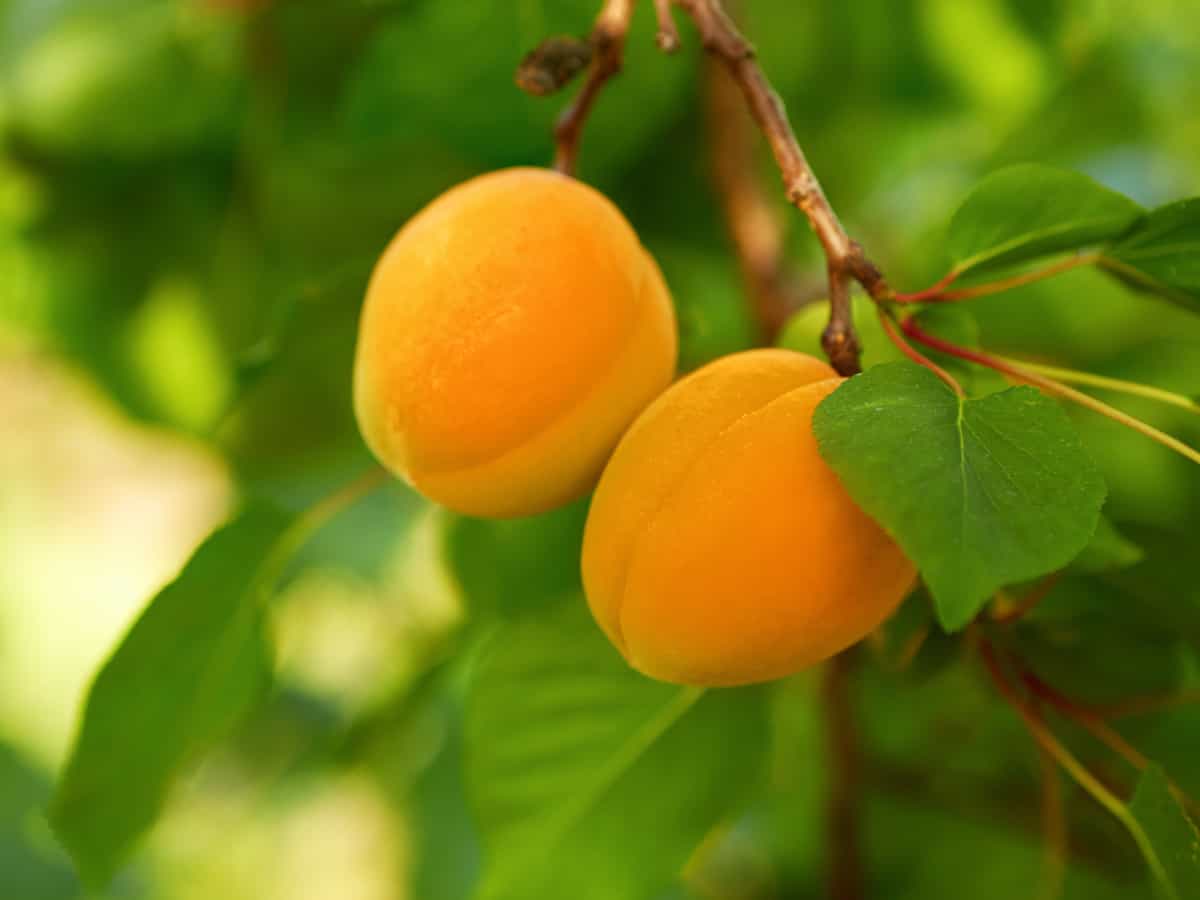
Caring for a dwarf apricot tree is very similar to caring for a peach tree. Though it is a self-fertile tree, you can guarantee successful pollination by helping out. When the flowers are open, and the pollen is exposed, dab gently with a soft brush and spread the dust onto the surrounding flower.
If you want to grow your own apricots, the Pixzee and Pixie-cot varieties grow as freestanding container trees. Dwarf apricot trees require little pruning. As long as they get enough sunlight, the apricot is a great fruit tree for indoor spaces, too. And, it smells lovely when in bloom.
Orange Trees
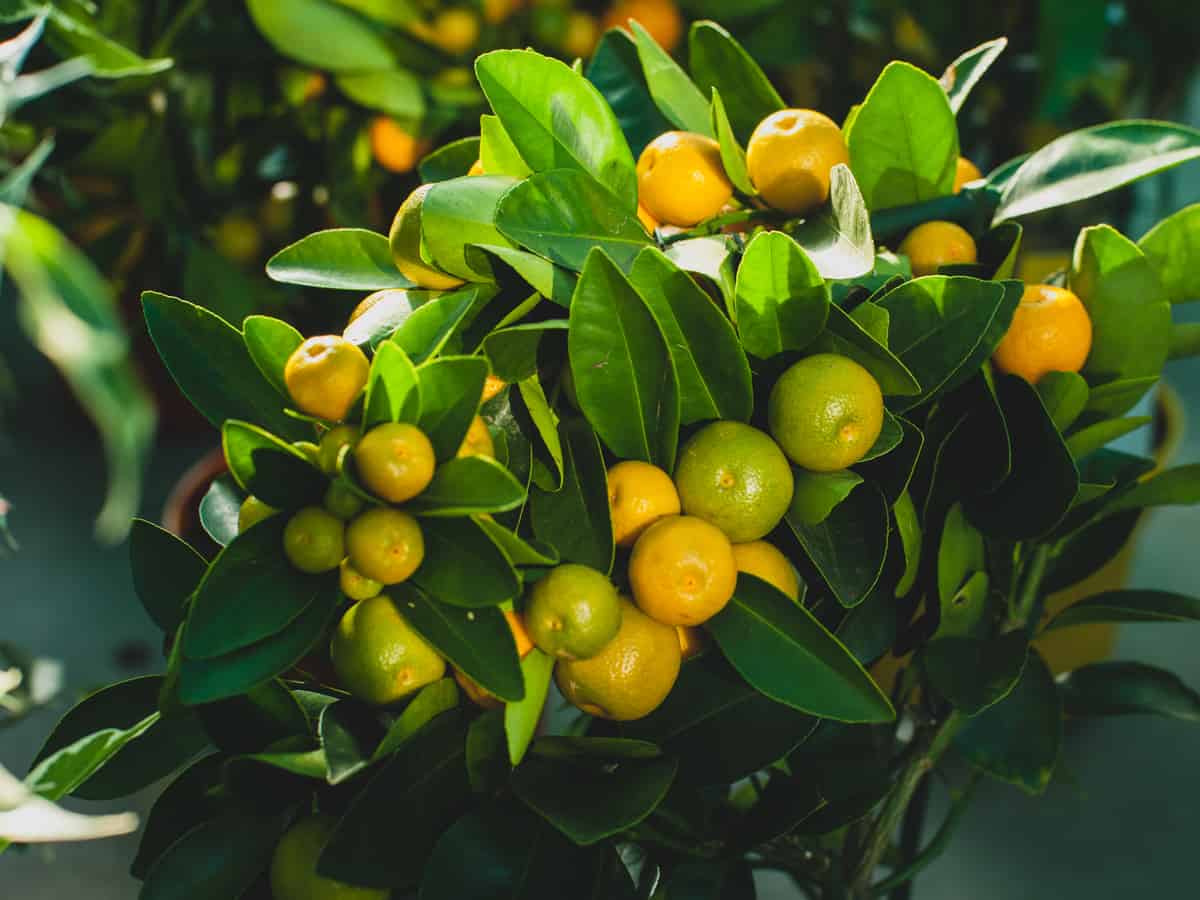
An orange tree, specifically the Calamondin variety, is a great first effort for beginner gardeners and it works well in the ground in warm climates or as one of the dwarf orange trees you can grow indoors.
The sour fruit that grows from these trees might be a bit too tart to eat off the tree, but it makes excellent marmalade or as a main ingredient for your favorite Orange Chicken recipe.
In addition to the benefit of having the fragrant flowers filling your space, this is a fruit tree that you can grow inside year-round. If you want a low-stakes fruit tree to learn how to grow fruit trees in the house, the Calamondin orange is your best choice. It’s a beautiful tree that appeals to all the senses.
Olive Trees
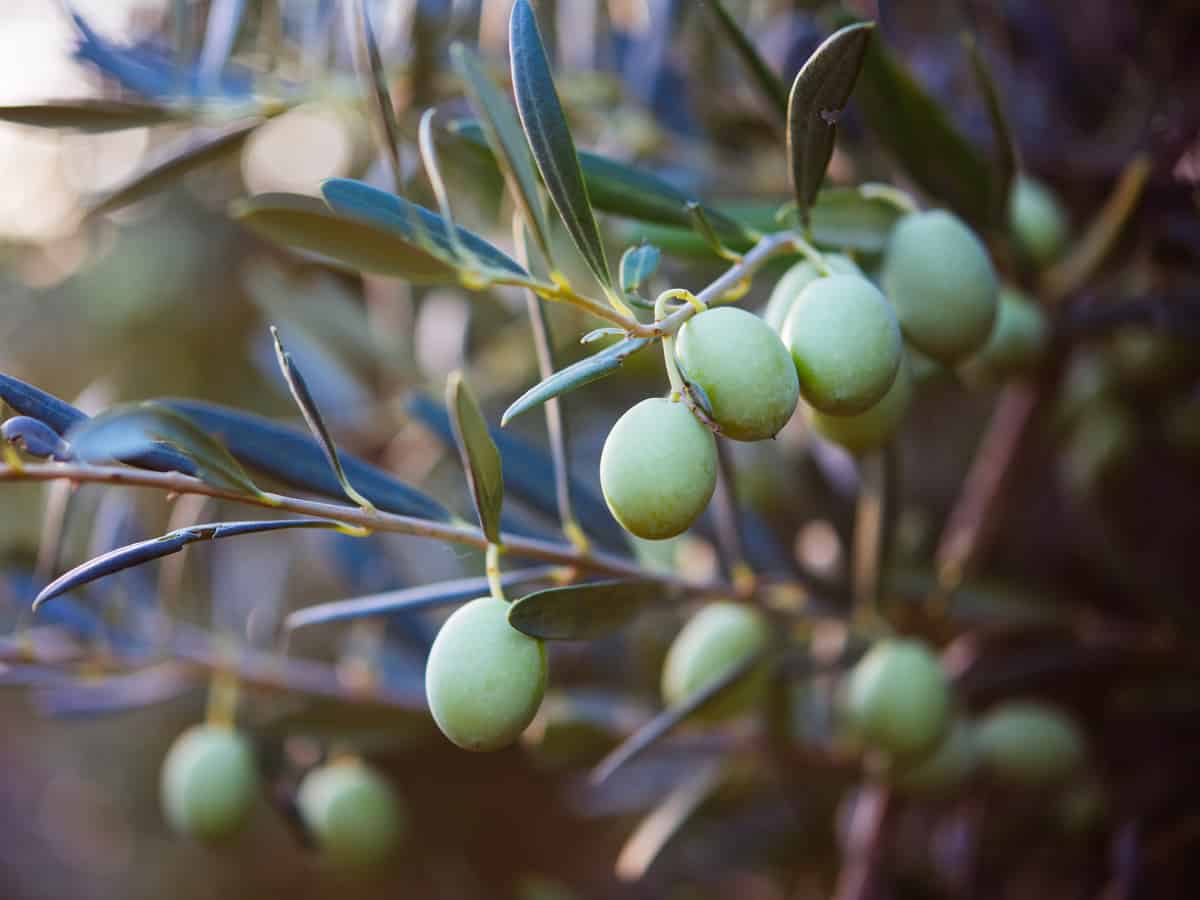
Olive trees are very adaptable and can even survive drought, which makes them an ideal fruit for growing in containers. They prefer soil that drains well, so add some small rocks to your potting soil. Not all olive trees bear fruit, so make sure you choose the right kind if that’s what you want.
These fruit trees should be planted in the spring once all frost is gone. Keep them growing year-round if you bring your potted tree inside once the weather gets colder. Remove from them from the outdoors when it falls below freezing.
Pomegranate Trees – Container Fruit Tree that Looks Great
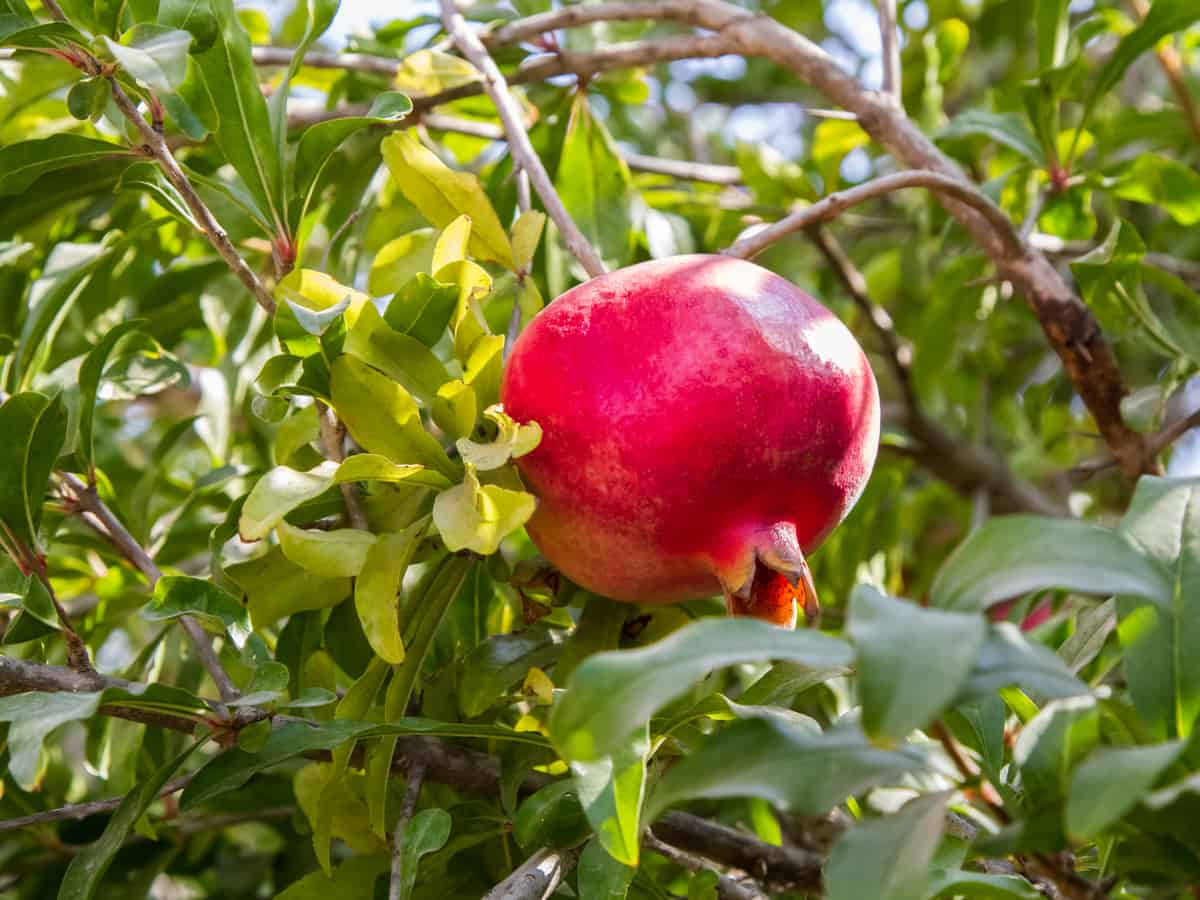
Pomegranates can be expensive when you buy them at the grocery store. Pomegranate trees solve this problem and not only bear the delicious fruit, but they also make a beautiful ornamental specimen. These amazing flowering plants for pots grow brilliant orange-red flowers before turning to fruit and have attractive green deciduous leaves.
Pomegranate trees prefer warm, arid conditions. However, if that doesn’t match your climate, grow your container fruit tree indoors. These trees are an excellent choice for growing in pots because they are self-pollinators, so you only require one to get fruit.
If you start from scratch, you will get fruit in your second year. Water your pomegranate tree about once a week.
Mandarin Trees
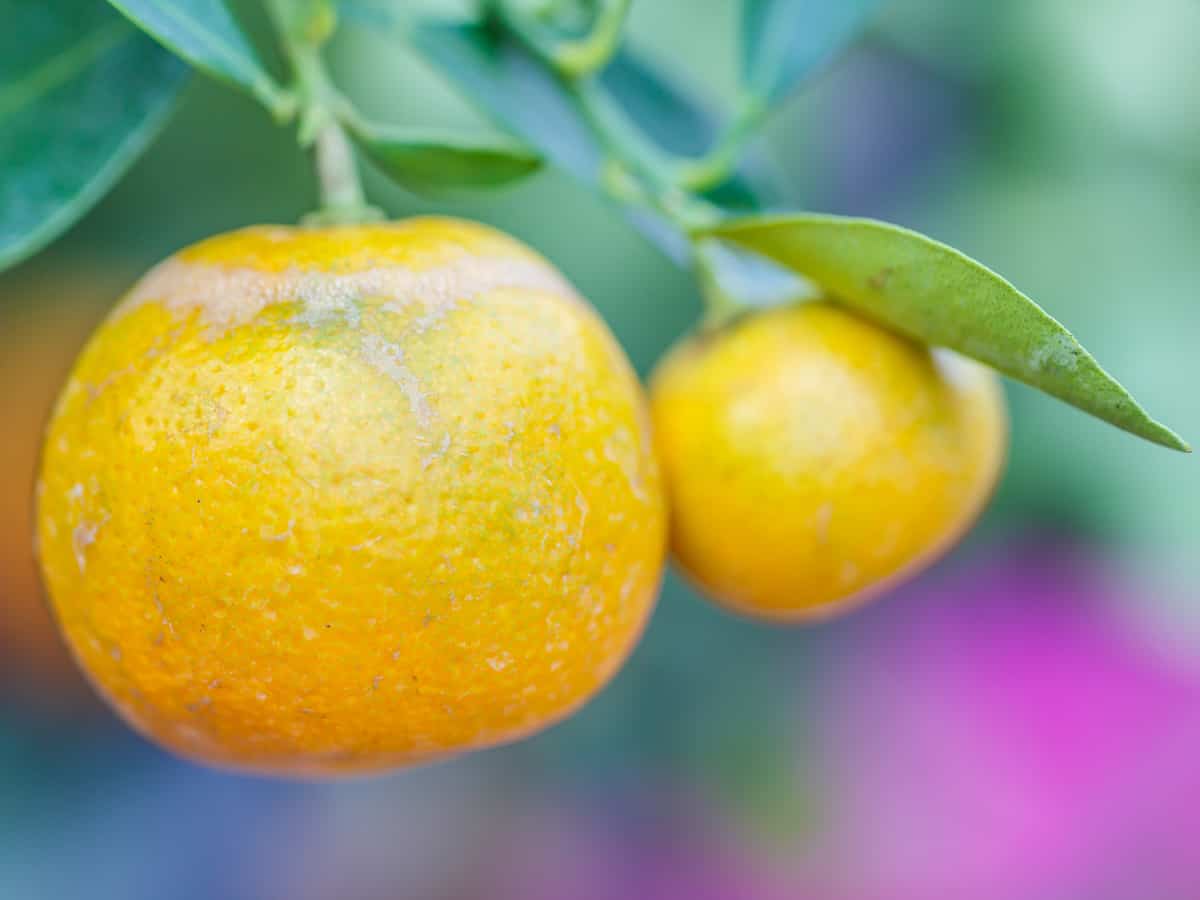
Mandarin trees are relatively small, making them perfect for growing in containers. While mandarins can tolerate the cold until about 20°F, it is best to bring your tree inside during the winter. Mandarin trees do best in full sun and should be placed in front of a window if you don’t have space outside.
To keep your mandarin tree in good health, water it consistently so the soil is moist. Be careful not to over-water, as you don’t want the roots to get soggy.
Did you know that growing a pineapple plant in a container is easy, too? Start your pineapple by adding the crown to a jar or dish of water and transplant it after there are roots. It will take a while to harvest fresh pineapple but it’s a fun project.
Now that you know which fruit trees are the best for growing in containers, you can get started on your very own orchard! If fruit trees aren’t your thing, you can always choose other shrubs for containers to add ambiance to your home.
No matter what climate you live in, these compact fruit trees can thrive by growing indoors. Whether you only have space on a balcony, in front of a window, or even on your roof, you can make your limitations work for you.
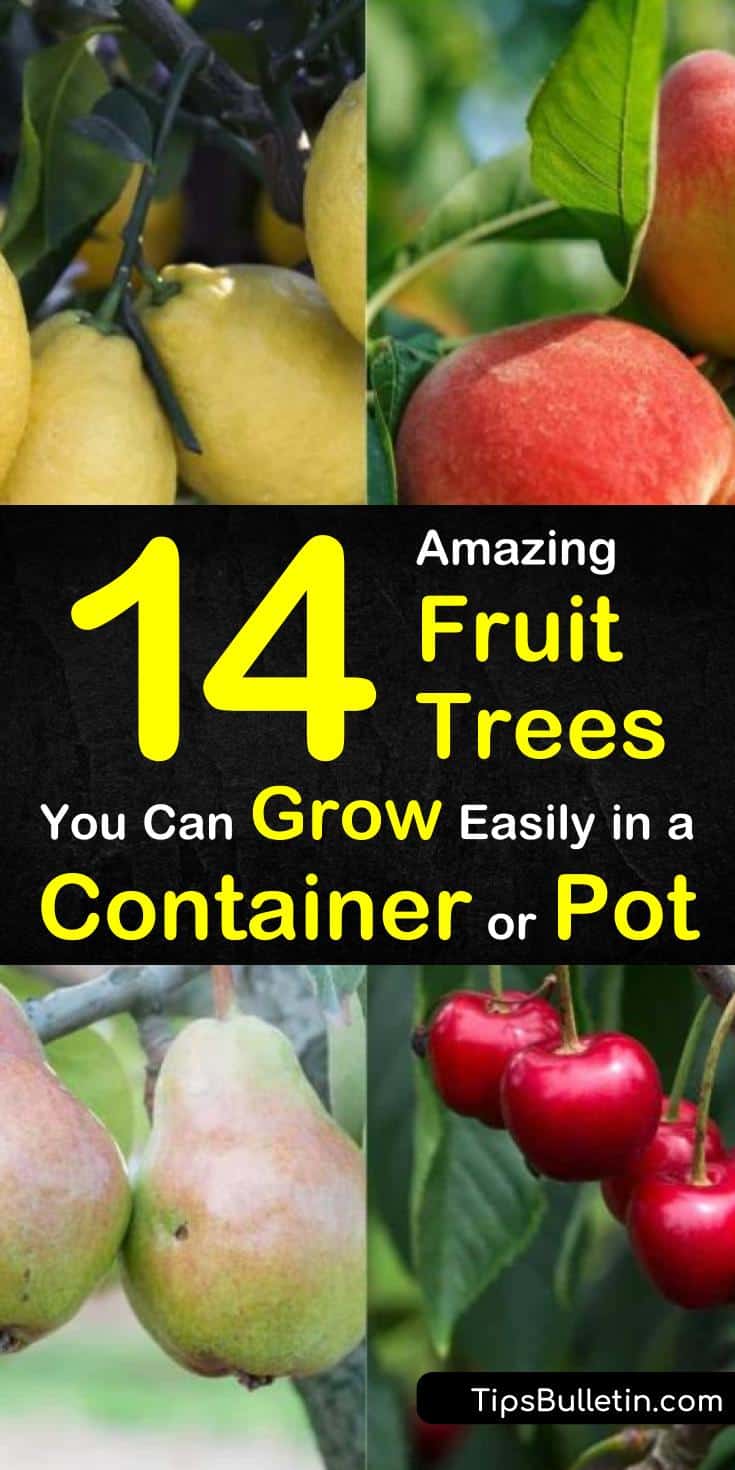
If you enjoyed learning about these dwarf fruit tree varieties, then share these tips about fruit tree container gardening with your friends and family on Facebook!